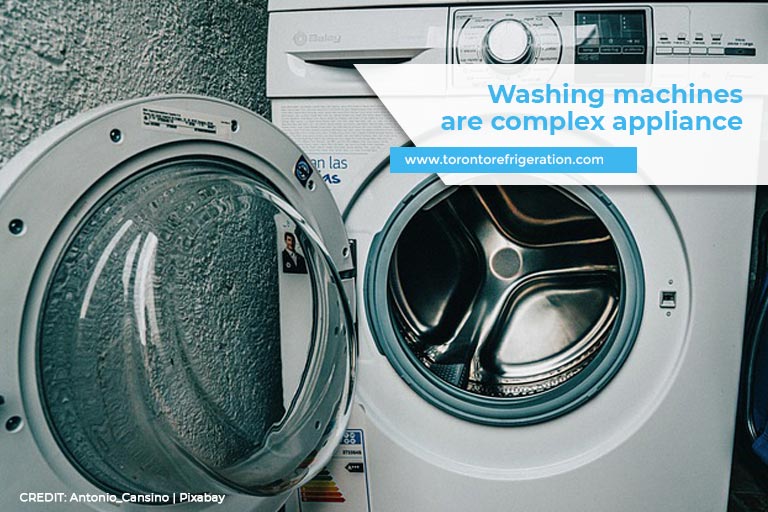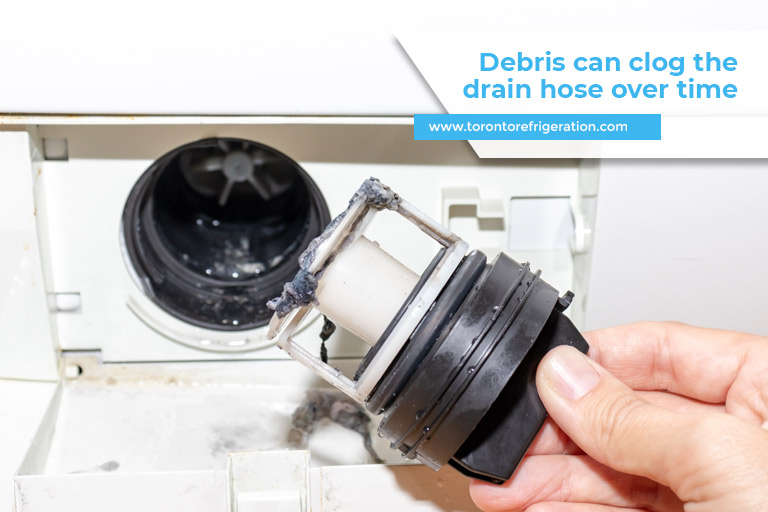Common Washing Machine Problems and Solutions
Technology has made our daily chores easier. Since most people live a busy routine, a washing machine plays an essential role in our daily life by making the task of washing clothes simpler and more convenient. With the advancement in technology, the design and function of the modern washers have significantly improved. Markets sell different types of washing machines from top loader, front loader, steam machine, portable machines, and many more! Unfortunately, regular use can wear the washing machine over time.
Washing Machine Parts
Like other modern appliances, your washer is a complex machine, leaving you a bit lost and confused when installing it or dealing with various issues. Getting to know the different washing machine parts and how they work can help you understand your appliance better and prolong its useful life. The parts used in your washer can make the machine unique in design and features.
Take note of the different parts you can find in your laundry washer:
- Water pump – It is designed to rotate in 2 directions to circulate the water through the wash cycle and during the spin cycle to drain the water.
- Water Inlet Control Valve – It is located near the water inlet point, which automatically opens and closes when clothes are loaded.
- Drum – A washer is designed with 2 tubs. The inner drum is where you load the clothes. It has holes that allow the water in and out of the tub. The outer drum consists of the inner drum and the water. Its function is to stop the water from leaking into the rest of the machine.
- Agitator or Paddle – Found inside the washing machine tub, both agitator and paddle are an essential part in cleaning the clothes. Most fully automatic washers are designed with paddles on the rotating inner drum controlled by a rotating disc. On the other hand, the agitator used in a semi-automatic washer rotates within the machine to generate a current. Both paddle and agitator are designed to spin around, rubbing the clothes together and removing the dirt on the surface of the clothes during the wash cycle.
- Washing Machine Motor – The washing machine motor works with an agitator or a disc that turns the drum to create a spinning motion.
- Drainpipe – This is where the dirty water flows out from the machine.
- Printed Circuit Board (PCB) – The PCB contains the main electronics designed to operate the washers. This acts as the AI of the machine. It’s even programmed to decide how much time is needed to wash or rinse the clothes.
- Timer – This component is programmed to set the washing and rinsing time. It can be either set automatically or manually.
- Heating Element – It allows you to heat the water to your desired temperature.
Common Washing Machine Issues and How to Fix Them
With so many complex parts, it can be confusing to determine which part of your washing machine has caused the problem and need repair. Problems can arise as early as the installation of the machine if the water supply is connected improperly. In some cases, the washing machine breaks down unexpectedly due to motor failure. Unless you have the knowledge and skills to fix your washer, it is wise to seek a washing machine repair service in Toronto, or you may end up causing more damage and breaking your warranty.
A broken washer can cause inconvenience. Getting repair as soon as possible is vital so you can get your washer back up and running again. Luckily, a little bit of troubleshooting can at least give you an idea of where the source of the problem is.
Here is our quick troubleshooting guide for the most common washing machine problems:
- Washer Not Draining
This common washing machine problem can be caused by one of the following:
- Residual gunk, debris, and small clothing item may have clogged the washing machine drain hose or pump
- Washer fails to engage the drain/spin cycle. If it presents an error code, check the product manual for solutions or call the manufacturer to clarify the cause of the problem
- Broken drain pump. Observe any unusual sound and/or check if the washing machine is leaking water)
Solutions:
- Reset Your Washer – The first potential solution to the problem is to perform a general reset of the washer by turning it off for about 1 minute and turning it back on. If this method fails to work, try performing a master reset. This technique is often used by many appliance repairmen to reboot the entire onboard componentry. To do the master reset, open and close the washing machine door 6 times for 12 seconds. Remove all the clothes in the tub, run the spin/rinse cycle to check if this solution works. If the water starts to drain, the problem is solved but if not, then let us proceed to the next solution.
- Unclog the Drain Hose – Before performing this method, switch off the machine. Make sure that the drain hose is not kinked or bent as it prevents the washer from draining water. Unscrew the drain hose to detach it from the back of the machine. Run some water to flush the clog out from the hose. You can also use a plumbing snake or a long stick to dislodge the clog.
- Washer Door Not Unlocking
A common problem in front loaders, as their doors need to be tightly sealed throughout the operation. The door will automatically unlock at the end of the wash cycle. In some cases, the front loader machine fails to unlock its door, trapping both clothes and water inside the machine. Possible reasons for this malfunction, include:
- Jammed locking mechanism
- Glitch in the washing machine’s program
- Washer not draining properly
Solutions:
- Restart it – The old reset trick can often resolve this problem. Turn off the washer for at least 60 seconds and turn it back on. This should help reboot the operation.
- Run a short cycle – If you suspect that your clothes have physically jammed the door lock, simply set the machine to run another short cycle to move the clothes and hopefully unjam the lock.
- Check the drainage hose – If the washer stops draining, check the drain hose for clogs. Make sure that the hose is not bent or kinked.
- Smelly Washer
After countless uses of your washing machine, it will eventually get dirty and mouldy over time and emit an unpleasant odour that will transfer onto your clothes. Luckily, this common washing machine problem can be easily resolved. Simply run a cycle without clothes to allow the water and cleaning solution to clean the nooks and crannies of your machine. Another method to clean your washing machine is by running a hot cycle.
Solutions:
This simple cleaning method works for both top-loader and front-loader washing machines. For your cleaning solution, mix together ¼ cup water and ¼ cup baking soda in a small container. Before using the solution to clean the washer, make sure to scrub thoroughly any residual scum or mould around the laundry machine. Add the solution to the detergent compartment and pour the vinegar into the drum. Run the hottest setting and start the cycle. The combination of baking soda and vinegar can effectively get rid of the mould and mineral buildup, leaving your washer smelling clean and fresh. To ensure that your washer is in good condition, clean it every 1 to 2 months.
- Washing Machine Keeps Tripping Power
This can be considered a complicated issue since there are various potential reasons that may have caused the washer to trip power. Perhaps, the problem could be caused by a faulty motor or a leak that caused the water to get into where the power is. Overloading the machine can also cause the motor to overheat, causing a problem with the power.
Solution:
- Avoid Overloading the Machine – If the problem is caused by an overheated motor, simply avoid dumping too many clothes in your washer. If there is too much laundry to wash, then it is time to invest in something that is a bit bigger. If the problem persists, it is best to leave the job to an expert washing machine repairman.
- Washing Machine is Leaking Water
If your top loader or front loader washing machine is leaking from the bottom, it can leave a mess every after wash. Oftentimes, a leaking washing machine does not always require an expensive repair. The solution can be easy.
Solutions:
- Drain Hose – The drain hose is likely the culprit if your washer only leaks during the spin cycle. Check the connection and the condition of the drain hose. Inspect for any signs of clogs, cracks, and damage. If you notice cracks or leaks on the part where the hose attaches to the machine, simply cut the end and re-clamp the hose or purchase a new one.
- Fill Hose – If you notice your washing machine is leaking, inspect the condition of the fill hoses and ensure that it is securely in place. Each time you remove the hoses, make sure to use a new rubber washer when putting them back in place.
- Water Inlet Valve – The build-up of rust or mineral deposits in the valve can cause water to leak from your washer. Replace the water inlet valve to resolve the problem.
- Drain Pump – The seal of the drain pump on the pulley can leak due to wear. Plenty of pumps come with a weep hole allowing the water to leak when the seal is damaged. So when you notice a pool of water near the drain pump, make sure to replace the pump right away.
- Drain and Hoses – The plastic bleach dispenser could be the culprit for the intermittent leaking. Since bleach is a corrosive chemical that can cause cracks on the plastic parts. Replace it as soon as possible. A large amount of bleach can corrode and pit the stainless steel components of the washer. Use oxygenating bleach instead to prevent damage to the drain and hoses since it is less corrosive.
If you got a broken washing machine, do not throw it away just yet. It is good to know that a washing machine repair cost is cheaper than buying a new one. If your washing machine starts to overflow, you can use the Internet to search for a trusted “washing machine repair service near you.”
Count Toronto Refrigeration for quick and efficient washer repair services in Toronto. Your convenience is our top priority that is why we got expert technicians to get your washing machine back up and running in no time. Give us a call at (416) 918-2700 to book an appointment.





